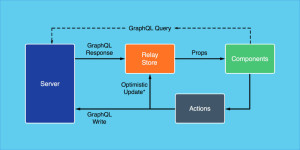Adwire was officially founded in June of 1996, as a partnership between the father and daughter team of Kent and Wendy Nield. Adwire was started quite humbly and was completely self-funded, with both partners working to bring in new business and establish contacts, while keeping other jobs and completing Adwire’s projects.
“In December of 1997, I left my other Web Design work behind and focused completely on Adwire,” says Wendy. “We moved into our new offices in Century City and began to bring in bigger contracts with companies like the United States Postal Service and Paramount Pictures. In the spring of 1998, Adwire expanded to include two additional people,” Wendy adds.
Key 1: Let the Workload Justify Your Company Size
Throughout the company’s history, Adwire has relied solely on incoming work to fund the business. They’ve never gone to outside investors.
“We have expanded and contracted to fit the needs of our business. At our smallest, we were 2 — at our largest, 12. Currently, we have 6 full time employees with 2 part time freelancers,” says Wendy.
Key 2: Don’t Focus on “Cheap” Sectors With Slim Margins
Wendy comments that “remarkably, some of our smallest projects have been from some of our “biggest” accounts — like Warner Brothers and New Line Cinema. Entertainment companies were notorious for trying to get A LOT for very little. This is one of the reasons why we decided early on not to focus just on the entertainment industry, and began to diversify and expand into other markets.”
Other companies we’ve interviewed here at SitePoint have often said that small budget projects are just as time consuming as the larger ones. Some companies have refused to touch anything that’s smaller than, say, $6000 USD.
Key 3: Use Existing or Past Contacts to Gain New Business
When the company was in its embryo stages and both Kent and Wendy held other jobs, Adwire used its existing contacts to build a client base. “What worked well for us was that Kent was working as a financial executive and had relationships with a variety of suppliers,” Wendy reveals.
“We went to the people we already knew and simply let them know that we had officially started a Web design firm. From that point, we were able to get some referrals and started building a portfolio and client list.
“We expanded on that by gaining new referrals from clients as a result of the good work and customer service we gave. In some cases we asked for referrals, but most of the time our clients offered them up without us even asking, which worked out nicely. And it still pretty much works the same way today.
“You have to be good,” Wendy adds, “– but if you don’t know people who can give you work, or put you in touch with people who need the services you’re offering, you’re not going to get much business. So it’s important to first look at who you know before you go out and spend all this money, time and effort trying to get business from people you don’t know, and who don’t know you.”
Key 4: Do What You Say You Will. Be a People Person (or Hire One)
One of the company’s keys to success, happy clients and plenty of referrals, has been the relationship they’ve established with everyone they’ve worked with.
“We’re small,” Wendy explains. “That eliminates layers of bureaucracy. However, our process has been finely tuned to make sure that the client is involved with every step of the project — they never feel shut out of the process. Plus, Ken Berger (who is our COO and is in charge of Account Service) is exceptionally good at establishing a solid relationship with every one of our clients.
“He creates a trusting relationship by following through on what he says he and our company can do (the key here is that he never, at any time, over-promises on what we can deliver, which is where a lot of design firms get themselves into a lot trouble) and he empathizes and listens to what the client is looking for and going through.”
Key 5: Have Patience, Don’t Burn Bridges, and Keep in Touch
“It’s really hard to get into big companies when you don’t have a personrelationship to tap into — it’s even hard to get into big companies when you DO have a personal relationship to tap into! I know a number of people personally at Disney, but we still can’t get our foot into that door,” Wendy says.
“But the key is to be patient and continue to build and solidify the relationships you have. If you do this genuinely and diligently, you’ll be in the right place at the right time to gain new business. In other words, don’t always be in a hurry, because good relationships take time,” advises Wendy.
Key 6: When You Have a Very Solid Lead, Spend Time on the Proposal
“We work really hard on our proposals. We make sure that they talk specifically about the project that we’re bidding on, that they explain in as much detail as possible exactly what we will be doing for the money that we’re charging,” notes Wendy.
“We include a description of the company, and explain why our experience and skills are relevant to this particular project. We describe how we see the project, and our ideas about the best solutions for the project.
“We also include a detailed description of our project management process as it relates to the project and detail exactly what we will deliver at each stage of the project. Finally we come up with some really great ideas that are not included in the RFP — ideas that are distinctively Adwire — that solve problems the prospect hasn’t necessarily identified and sell them as optional add-ons.
“We always attach a detailed project schedule (which is how we estimate the project) and a series of case studies that are relevant to the project we are bidding on. The proposals are usually between 10 and 20 pages long.”
Adwire’s record time in acquiring a client was 3 days, but that’s not the norm. Wendy told us that it usually takes several months and multiple meetings before an agreement is signed.
Key 7: Go Back to Clients and ask for More Business
“We stay in constant contact with our clients, and make suggestions for new projects whenever we can,” Wendy says. “Actually, we’ve recently implemented regularly-scheduled brainstorm sessions internally to come up with new ideas to pitch to existing clients. We believe that doing this will allow us to become even more proactive in exploring ways to enhance our relationships with clients.
“As you know, it’s very easy to get inundated with project after project, and forget what and how you can go back into a previous/existing client and create even more value for them, ” Wendy adds.
The Results Speak For Themselves…
The results of all of this? Adwire’s client list includes Universal, Paramount, U.S. Postal Service, New Line Cinema, PBS, Warner Brothers, Vanguard and Union Bank.
The company completes anywhere from 10 to 20 projects in a quarter. “Right now,” Wendy says, “we’re actively working with 5 clients on various projects. We’re usually working on between 4 and 10 projects at any given time depending on the size of the projects.”
 Matt Mickiewicz
Matt MickiewiczMatt is the co-founder of SitePoint, 99designs and Flippa. He lives in Vancouver, Canada.



